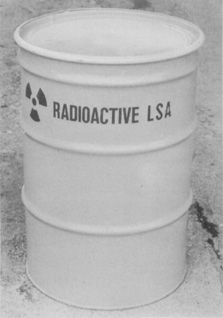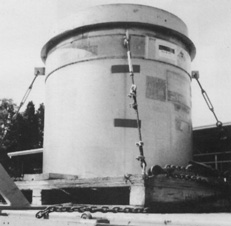Transporting Radioactive
Materials in New Jersey:
Packaging
The strict packaging standards specified by U.S. Department of
Transportation and U.S. Nuclear Regulatory Commission regulations
have reduced the possibility of any harm to people and the
environment associated with the transportation of radioactive
materials.
The packaging used is determined by the activity, type and
form of the material to be shipped. Depending on these factors,
radioactive material is shipped in one of three types of
containers:
 |
Strong,
Tight Packages...
are
used for materials that present little hazard from
radiation exposure because of their low level of
radioactivity. These containers will retain and protect
the contents, such as contaminated clothing, laboratory
samples, and smoke detectors, during routine
transportation. |
Type A
Packages...
are
used for materials with higher specific activity levels.
Regulations require that these packages protect their
contents under conditions normally encountered during
transportation. Type A packages are typically used to
transport radiopharmaceuticals and certain industrial
products. |
 |
 |
Type
B Packages...
are
used for radioactive materials that exceed the limits for
a Type A package. Shippers use this type of package for
materials that would present a radiation hazard should
there be a major accident. Type B packages must be able
to withstand severe accident conditions without releasing
their contents. Type B packages, which can range in size
from small containers to containers weighing over 100
tons, are used to transport such materials as high-level
radioactive waste, spent fuel rods from nuclear power
plants, and medical therapy sources. |
Return
to Public Information Material home page
 Back to the Siting Board Home Page
Back to the Siting Board Home Page
Last updated September 1997


